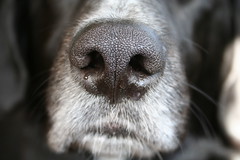A nano ‘nose’ developed by an Israeli professor can detect and classify cancer, kidney disease and other serious ailments just by analyzing breath sample
Within a few years, it will be possible to breathe into a portable medical device to find out if you have diseases such as cancer or kidney disease – and to determine its exact type so that doctors can better target treatment. This revolutionary non-invasive invention is the brainchild of a celebrated Israeli-Arab chemical engineer at the Russell Berrie Nanotechnology Institute of the Technion-Israel Institute of Technology.
Dubbed NA NOSE (for nano-artificial nose), Prof. Hossam Haick’s device is in the early stages of being readied for commercialization through the Alfred Mann Institute of the Technion, a philanthropic fund to advance biomedical ideas originating at the university. Lab and clinical researchers are discovering wider applications for the product the more they test and fine-tune it.
The nose knows
Haick’s “aha” moment was a conversation with two specialists who said that patients with diseased kidneys typically have ammonia-scented breath. For the past six years, he and his team have been perfecting an inexpensive sensor that sniffs out disease biomarkers passing from the bloodstream to the lungs and out through the breath.
Focusing first on lung cancer, the research earned Haick a 1.73 million-euro Marie Curie Excellence Award in 2006 and a 1.8 million-euro European Research Council Award in 2010. Now he is leading a European consortium of eight universities and companies to develop advanced screening nanosensors for lung cancer with the help of a 5.4 million-euro grant.
“This is at the research level,” stresses Haick, who admits he works on the project “more than full time.” It could take three or four years for NA-NOSE to reach the market, as it must go through rigorous procedures to gain approval from the US Food and Drug Administration or the equivalent agencies in other countries.
In the meantime, the device keeps looking more promising, as Haick reported to the American Society of Clinical Oncology last fall and in the British Journal of Cancer in December last year. Beyond simply showing that someone has a disease, NA-NOSE can pinpoint the particulars. “In the last two years, we achieved good advances in discrimination between lung, prostate, breast and colorectal cancer and we have shown an ability to distinguish between head and neck cancers and lung cancers,” says Haick.
Related articles
- Sniffer dogs detect lung cancer (bbc.co.uk)
- Man’s Best Friend Able To Sniff Out Lung Cancer Before Doctors Detect (medicalnewstoday.com)









